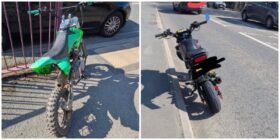How to Use An eBike: A Quick Start For New Riders

In the UK, electric bikes, or e-bikes, are becoming popular means of transport. Riding during work commutes, driving through picturesque countryside, or switching to an eco-friendly transport option like cycling to work is what an eBike offers. But for all those new to electric bike, figuring out how eBikes work can be tricky in the beginning. This guide details everything you need to know regarding how to use an eBike, setting up an eBike, safety, riding techniques, maintenance tips, and much more.

Getting Started: Know Your eBike
Before starting your ride, familiarize yourself with all parts of the eBike. Most models, like the ones sold on engwe-bikes-uk.com, have at least three features in common:
- Battery: A removable and rechargeable piece that powers the electric motor.
- Motor: Can provide pedal assistance or throttle power.
- Pedal Assist System (PAS): Assists a rider according to how hard they pedal.
- Display: The display shows speed, battery level, assist mode, and other metrics. Almost all eBikes feature displays.
Just like regular bicycles, eBikes also feature Brakes and Gears. However, the two elements are tailored to eBike mechanics.
Understanding these elements shall provide ease while riding an eBike.
Charging the Battery
One of the primary tasks that come with getting an eBike is to charge the battery. Depending on the model, it can be either charging while the battery is on the bike or charging once the battery is taken off for ease of access. The range for charging the battery and the bike’s functionality is 4-6 hours, depending on the bike’s silicon battery capacity.
Use the charger that the manufacturer provided. Store the battery in a safe, dry indoor environment. In order not to damage the life of the battery, do not deplete the battery all the way regularly.
Turning the eBike On or Switching It On
Switching On the eBike
Just to get your bike ready for action. Put the battery key -if applicable – in the inserting, then subsequently turn it clockwise. Fittingly press and hold the power button for the display unit or the controller and wait for it to turn on. Once successfully switched on, the system is expected to come on and indicate the current and available settings.
You are required to use the “+ and “– buttons” in amending the level of pedal assistance. Provided is the anticipation of lower levels like Eco or 1, which logically conserve the battery and offer minimal assistance. High levels, like Sport or 5, are also provided, which offer stronger assistance.
Riding Your eBike – Step-by-Step Guide:
-
Start Pedaling
To the core guides with charge eBike comes with is: Commence Pedaling
Once the gadget is powered, switched on, and in assist preset, bicycle mode, Smoothly starts pedaling.
As per the set expectation, the motor provides the desired support and assistance based on how you decide to put it.
-
Optimize Gears Setting
Pedal-assist bikes have both automatic and manual advantages. Use lower assists with lesser terrain slopes, steep slopes with higher assists, and combine gear shifting for hiking with speed pre-sets for speedy areas. Always combine proper usage of the gear, motor, or pedal assist for the smoothest experience.
-
Shift As Required
While on standby, modify the aid levels based on the desired exertion level or the need for the particular aid-enhanced level. Examples of level usage include:
Use a higher assist level for elevation or headwind terrains.
Use lower gear assist inversely with elevation on flat ground.
-
Simplify Battery Management
During prolonged journeys, always pay attention to the remaining charge. Estimate the range assist during intervals of lower headwinds to prevent power failure in the middle of a trip. Most assist displays give the most accurate evaluations if the criteria are met.
-
Responsible Wheel Use
Avoid full slams and build up brakes slowly to decelerate gently. For ease of use, work equally on the front and back brakes to avoid over-rotating or losing balance. Always accelerate at a gradual pace, and remember that pedal-assist bikes are quicker than ordinary bikes.
Additional Regulations in the UK
As an added note, a bike qualifies and can be legally classified as an “electrically assisted pedal cycle” (EAPC) if under warranty. The conditions for warranty include:
- EAPC attached successfully without bumping into any walls of underland rules.
- Manages the 250-watt motor power on EAPC limit non-stop.
- Fulfills the preset non-assist requirement while exceeding 15.5 mph, or 25 km/h.
- The pedal motor can only be activated while in motion.
If your ebike satisfies the above conditions, it can legally be ridden on cycle lanes and roads without needing a license or insurance. While not legally obligated, lights and especially the use of a helmet remain highly recommended for booster safety during night rides.
Best Practices for Safe Riding
- Even though cycling by law does not mandate one, the helmet is advised to be worn for added safety.
- Visibility aids should be placed in low-light conditions.
- Traffic laws are to be obeyed at all times. This includes courtesy stopping at stop signs and obeying traffic lights.
- Turns should be signaled, and the bike should be ridden predictably and constantly.
- Situational awareness, especially in city regions with pedestrians and automobiles,s is to be exercised.
Parking and Locking
While parking an eBike, never forget to use good locks to secure the frame and wheels. Also, ensure that the lock used is of superior quality. If the battery can be removed, consider carrying it with you. In major UK cities, many eBikes come with dedicated parking spaces alongside secure racks, so remember to utilize them whenever available.
Routine Maintenance
eBikes maintain their best condition with care. Left unchecked, eBikes require repairs regularly. To counter this, here’s a quick care list:
Battery: Ensure that eBikes are carried and charged, as well as avoid full discharge.
Tires: ensure that tires are inflated to the recommended PSI.
Chain: Lubricate every few weeks at a minimum to prevent wear.
Brakes: Ensure that the bike is inspected and check the brake pads.
Software/display: Guarantees suggest utilizing new firmware available on the bike model.
For more complex repairs or maintenance, an expert or eBike service center would be the best option.
Conclusion
After understanding the fundamentals, employing an eBike is reliable. Familiarizing oneself with an electric bike, from charging the battery to adjusting the pedal-assist feature and managing the ride, doesn’t require ample time. Whether for weekday commuting or weekend exploring, knowing how to use an eBike improves efficiency, comfort, and enjoyment during rides.
If you are in the market for an eBike for the first time, check out engwe-bikes-uk.com, which specializes in resources and models designed specifically for UK riders.
Spotted something? Got a story? Send a Facebook Message | A direct message on Twitter | Email: [email protected] Latest News








